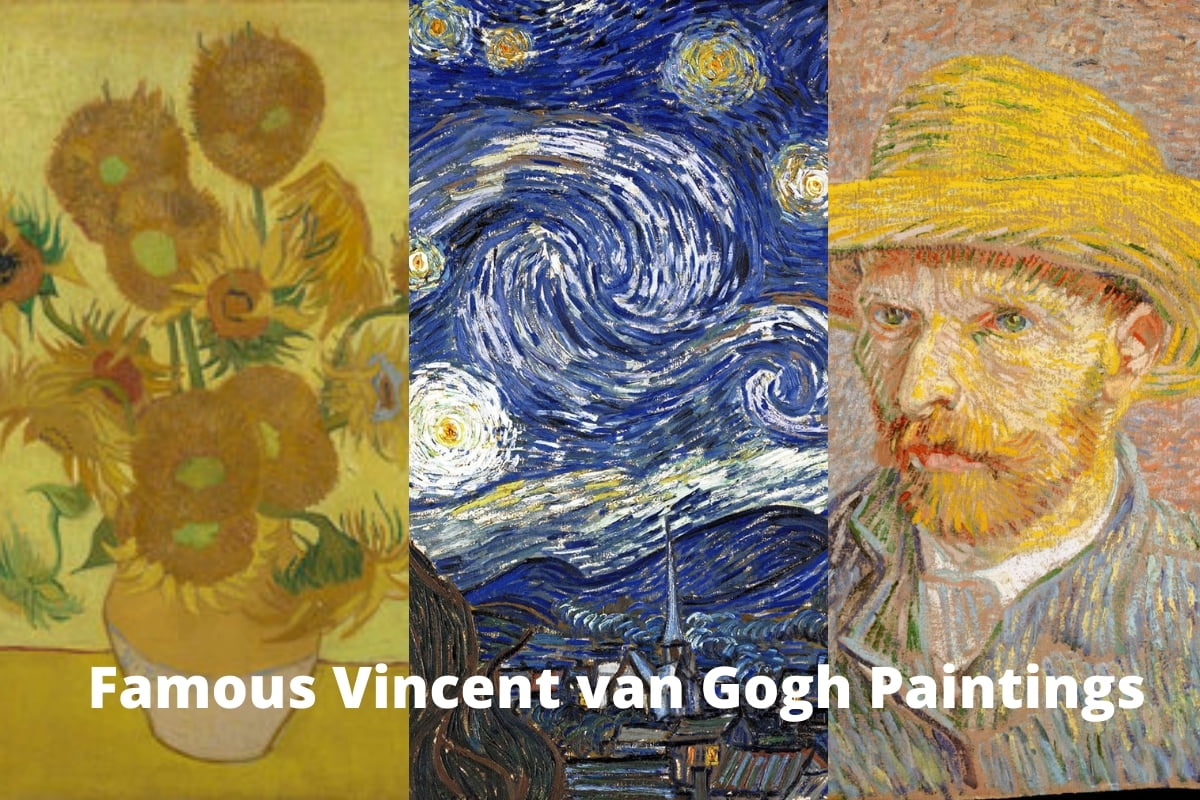Uncategorized
10 Famous Vincent Van Gogh Paintings: Exploring the Timeless Beauty
Vincent Van Gogh, a luminary of the art world, left an indelible mark with his vibrant and emotive paintings. His masterpieces continue to captivate art enthusiasts worldwide, offering a glimpse into his tumultuous yet brilliant mind.
In this article, we embark on a journey through 10 of Van Gogh’s most famous paintings, each a testament to his genius and unparalleled vision.
1. The Night Café:
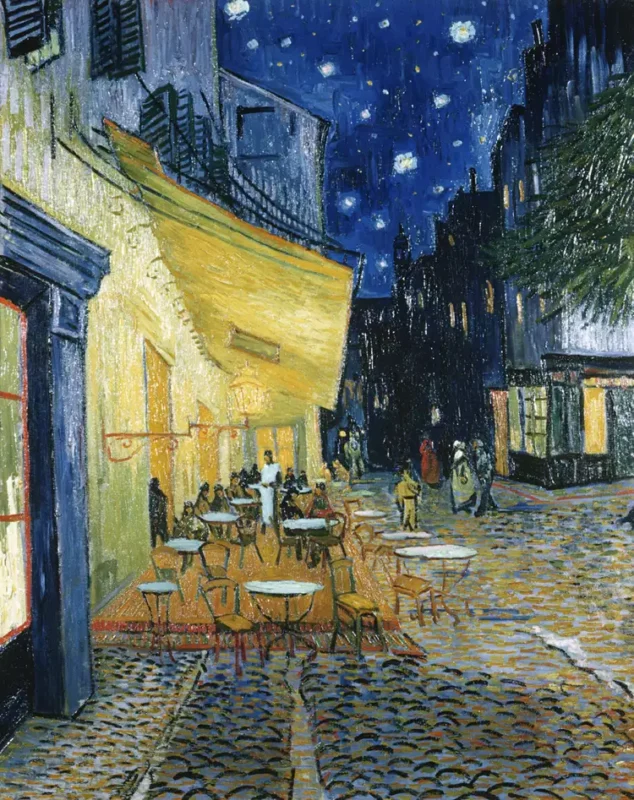
The Night Café transports viewers into a surreal realm, depicting the interior of a café in Arles, France, with striking intensity. Van Gogh’s use of vivid, clashing colors and skewed perspectives creates an atmosphere of unease and tension. The garish hues of red and green dominate the scene, conveying the sense of a space steeped in darkness and despair.
Amidst the dimly lit interior, figures appear isolated and detached, adding to the painting’s haunting allure. Through The Night Café, Van Gogh invites viewers to confront the complexities of the human condition, where loneliness and melancholy lurk beneath the surface of everyday life.
2. The Starry Night:

The Starry Night transports viewers to the tranquil banks of the Rhône River, where Van Gogh captures the serene beauty of a starry night. Against the backdrop of a deep blue sky illuminated by a myriad of twinkling stars, the river shimmers with ethereal luminescence.
Van Gogh’s expressive brushwork and vibrant palette infuse the scene with a sense of awe and wonder, inviting viewers to contemplate the mysteries of the universe. As the stars dance in the night sky and reflections ripple across the water’s surface, the painting becomes a poignant meditation on the fleeting nature of existence and the enduring power of beauty to transcend the confines of earthly life.
3. Irises:
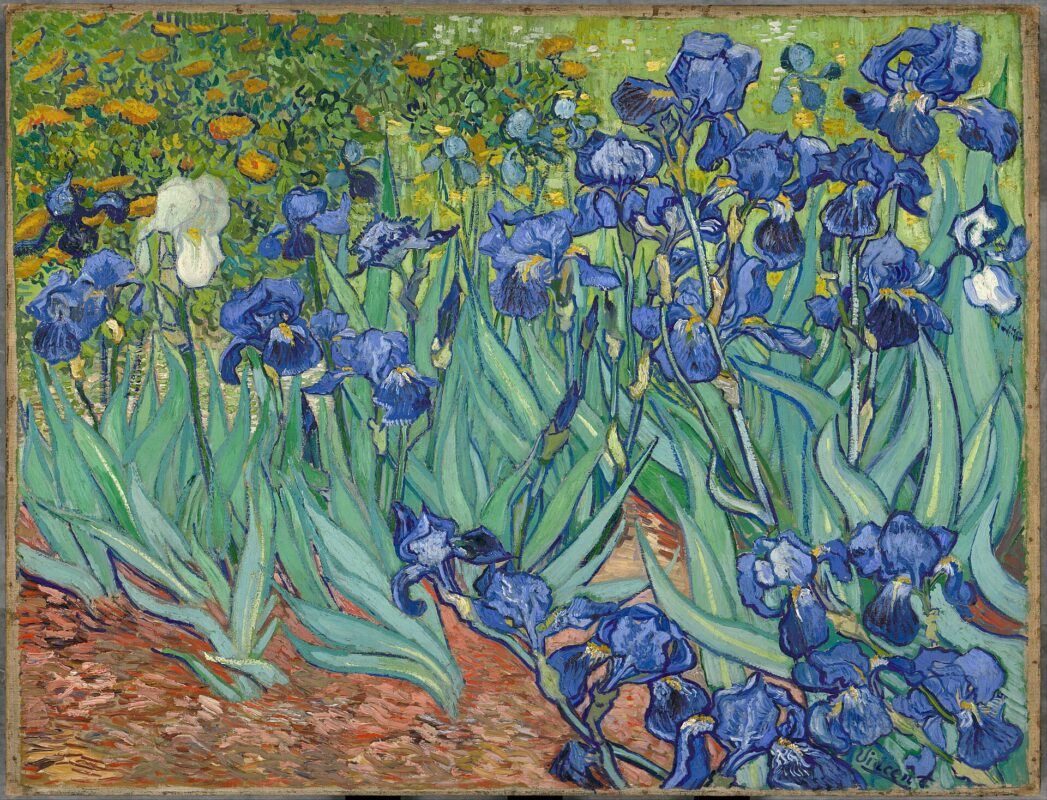
Irises showcases Van Gogh’s profound connection with nature, as he depicts a vibrant bouquet of irises against a backdrop of lush foliage. Painted during his time at the Saint Paul-de-Mausole asylum, the series exudes a sense of tranquility and introspection. With bold, expressive brushstrokes and a rich, harmonious palette of purples, blues, and greens, Van Gogh captures the essence of these delicate flowers in exquisite detail.
As viewers gaze upon the intricate patterns and graceful curves of the irises, they are transported to a realm of beauty and serenity, where the tumult of the outside world fades away. Through Irises, Van Gogh invites us to find solace and inspiration in the simple wonders of the natural world, reminding us of the transformative power of art to uplift and nourish the soul.
4. The Potato Eaters:
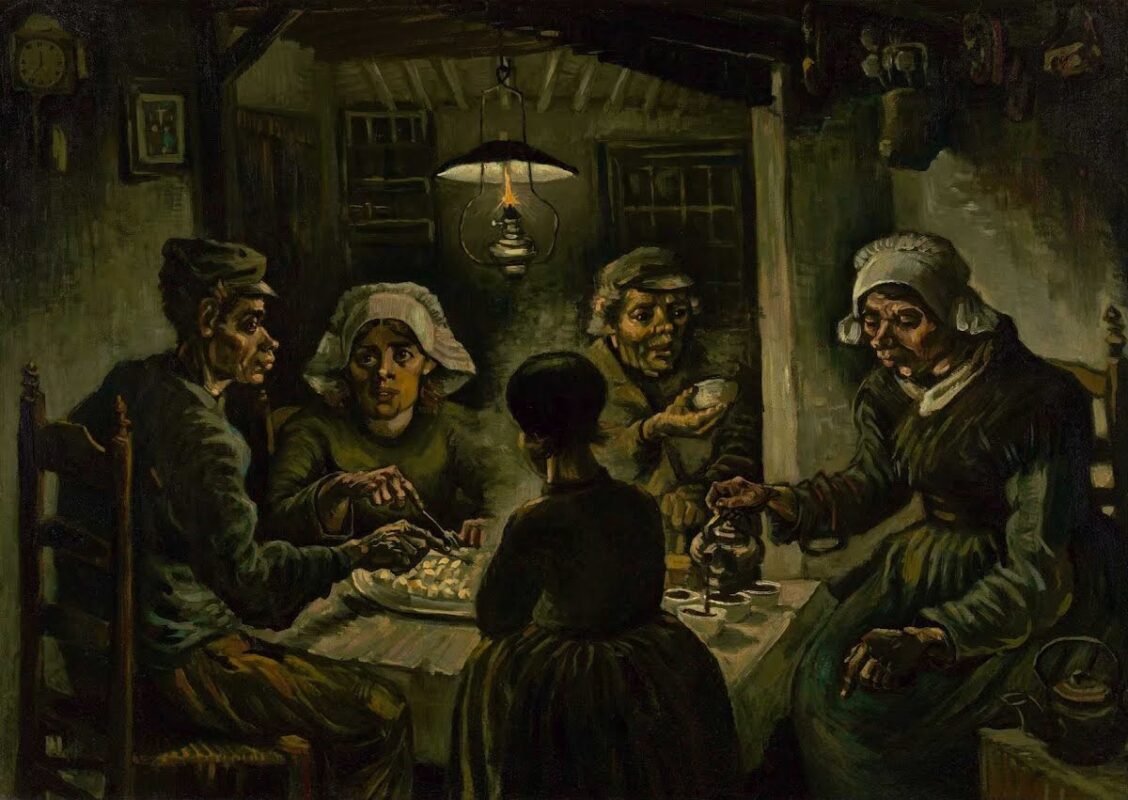
The Potato Eaters offers a glimpse into the harsh realities of rural life in 19th-century Netherlands, as Van Gogh portrays a group of peasant farmers sharing a meager meal of potatoes. Set against a backdrop of dimly lit interiors and rough-hewn furnishings, the figures are depicted with raw, unvarnished realism. Van Gogh’s use of earthy tones and thick, textured brushstrokes lends the scene a sense of gritty authenticity, as if viewers were peering through a window into the past.
As the figures huddle together in the dim light, their weathered faces illuminated by the glow of the lamp, the painting becomes a poignant meditation on the dignity of labor and the resilience of the human spirit in the face of adversity.
5. Almond Blossoms:

Almond Blossoms radiates with the joyous celebration of life, as Van Gogh depicts a branch of almond blossoms in full bloom against a clear blue sky. Inspired by the birth of his nephew, the painting exudes a sense of renewal and hope. Van Gogh’s use of vibrant colors and dynamic brushwork infuses the scene with a sense of vitality and energy, as if the blossoms themselves were bursting forth in a symphony of color and form.
As viewers gaze upon the delicate petals and graceful branches, they are reminded of the cyclical nature of life and the eternal beauty of the natural world. Through Almond Blossoms, Van Gogh invites us to embrace the promise of new beginnings and the transformative power of love and creativity.
6. Sunflowers:
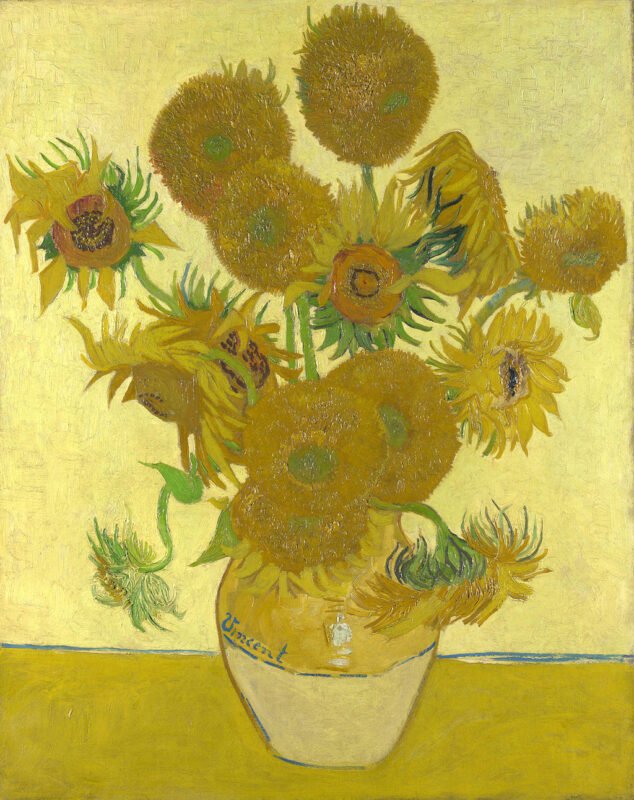
Vincent Van Gogh’s Sunflowers series is a testament to his mastery of color and form, capturing the vibrancy and vitality of these iconic flowers with unparalleled intensity. Through bold brushstrokes and rich, golden hues, each sunflower bursts forth from the canvas with a radiant energy that is both captivating and uplifting.
Beyond their visual appeal, these sunflowers symbolize themes of joy, adoration, and the eternal cycle of life, inviting viewers to contemplate the beauty and transience of existence. Van Gogh’s Sunflowers stand as timeless reminders of the artist’s profound connection to the natural world and his ability to evoke emotion and transcendence through his art.
7. Wheatfield with Crows:
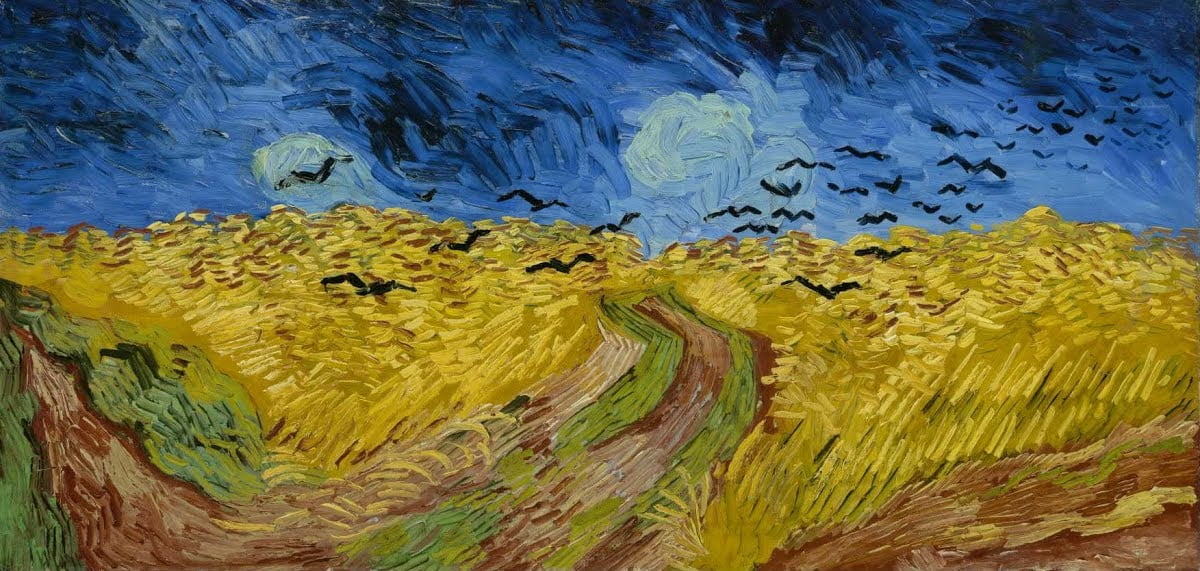
Wheatfield with Crows serves as a haunting meditation on the transience of life and the inevitability of death. Set against a backdrop of golden wheat fields and stormy skies, the painting depicts a lone figure walking along a path, surrounded by a flock of crows. Van Gogh’s use of bold, swirling brushstrokes and dark, ominous tones imbues the scene with a sense of foreboding and existential angst.
As the crows wheel and caw overhead, the figure’s solitary journey takes on a symbolic resonance, evoking themes of isolation, despair, and longing. Through Wheatfield with Crows, Van Gogh invites viewers to confront their own mortality and contemplate the fleeting nature of existence, reminding us to cherish each moment and embrace the beauty of the world around us.
8. Cypresses:

Cypresses transports viewers to the sun-drenched landscapes of southern France, where Van Gogh found inspiration amidst the towering cypress trees. Set against a backdrop of azure skies and rolling hills, the slender forms of the cypresses soar upwards towards the heavens, their dark foliage contrasting sharply with the vibrant hues of the surrounding landscape.
Van Gogh’s use of bold, expressive brushwork and vivid colors imbues the scene with a sense of vitality and energy, as if the very trees themselves were pulsating with life. As viewers gaze upon the majestic beauty of the cypresses, they are reminded of the timeless power of nature to uplift and inspire the human spirit. Through Cypresses, Van Gogh invites us to immerse ourselves in the splendor of the natural world and find solace amidst the chaos and uncertainty of life.
9. Les Alyscamps:

Les Alyscamps transports viewers to the ancient Roman necropolis of Alyscamps in Arles, France, where Van Gogh found inspiration amidst the crumbling tombs and whispering cypress trees. Set against a backdrop of golden autumnal hues and dappled sunlight, the avenue stretches into the distance, disappearing into a haze of shadow and light.
Van Gogh’s use of bold, swirling brushstrokes and vibrant colors imbues the scene with a sense of movement and energy, as if the very landscape were alive with the echoes of the past. As viewers gaze upon the timeless beauty of Les Alyscamps, they are reminded of the impermanence of life and the enduring power of art to transcend the boundaries of time and space. Through Les Alyscamps, Van Gogh invites us to contemplate the mysteries of existence and find solace in the eternal cycle of life and death.
10. The Sower:
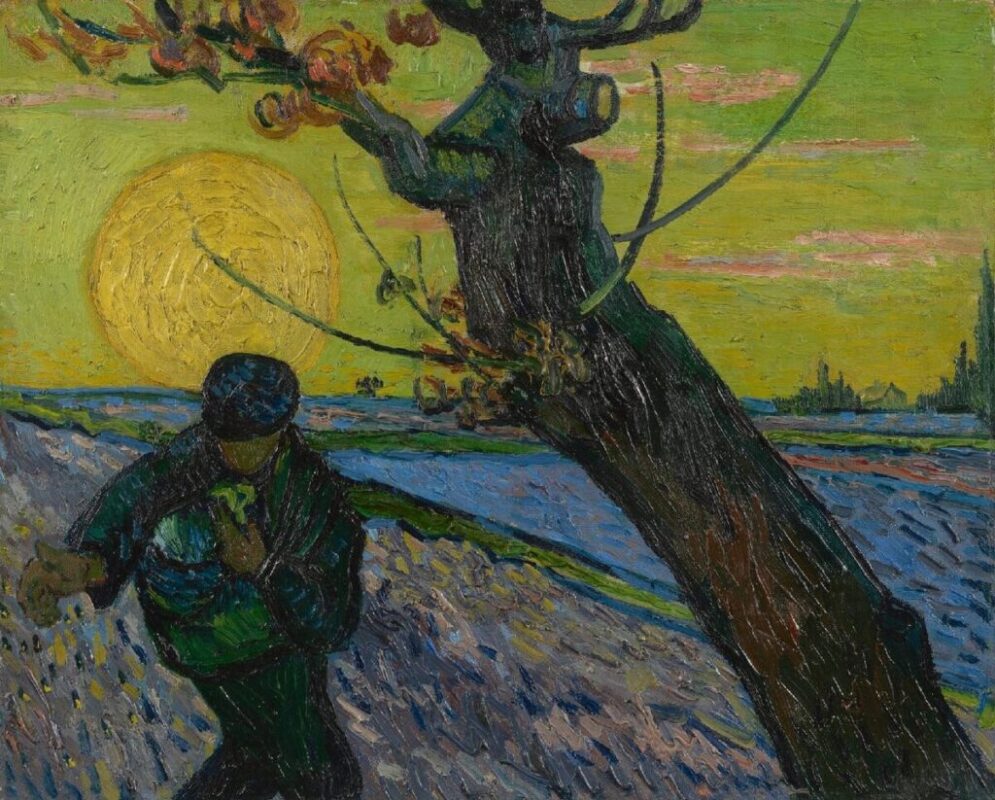
The Sower captures the timeless symbolism of a lone figure striding across a vast expanse, casting seeds into the fertile soil. Set against a backdrop of golden fields and a radiant sky, the scene radiates with a sense of optimism and renewal. Van Gogh’s use of bold, dynamic brushstrokes and vibrant colors imbues the painting with a sense of movement and energy, as if the very act of sowing seeds were a metaphor for the cycles of life and growth.
As viewers gaze upon the figure’s steadfast determination, they are reminded of the resilience of the human spirit and the transformative power of hope. Through The Sower, Van Gogh invites us to embrace the possibilities of the future and cultivate a sense of purpose and possibility in our own lives.
Conclusion
In conclusion, Vincent Van Gogh’s famous paintings stand as timeless testaments to the enduring power of art to inspire, provoke, and uplift the human spirit. From the haunting depths of The Night Café to the transcendent beauty of Starry Night Over the Rhône, each masterpiece invites viewers on a journey of exploration and discovery, where the boundaries between the material and spiritual worlds dissolve.
Through his bold use of color, dynamic compositions, and emotive brushwork, Van Gogh invites us to see the world through new eyes and find beauty and meaning in the most unexpected places. As we contemplate the rich tapestry of his artistic legacy, we are reminded of the profound impact that art can have on our lives, and the enduring power of creativity to transform our perceptions of the world around us.
Also Read: “10 Most Famous Paintings by Salvador Dali”

